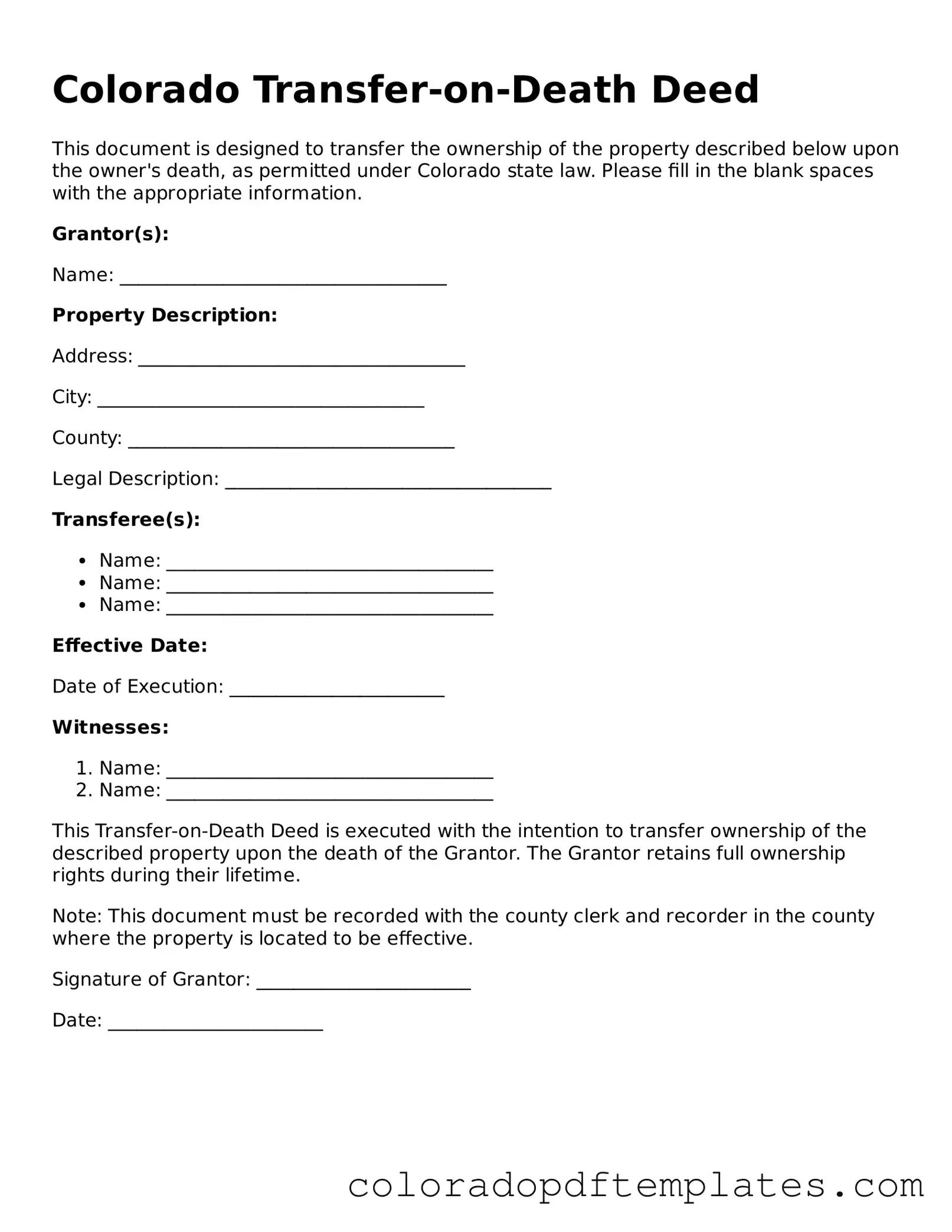Blank Transfer-on-Death Deed Template for Colorado State
The Colorado Transfer-on-Death Deed is a legal document that allows property owners to designate beneficiaries who will receive their real estate upon their death, bypassing the probate process. This form provides a straightforward way to ensure that your property is transferred directly to your chosen heirs. Understanding how to properly complete and file this deed is crucial for effective estate planning.
Make This Transfer-on-Death Deed Online
